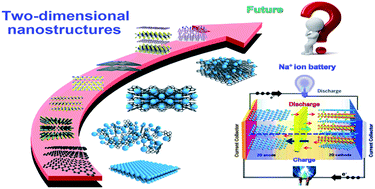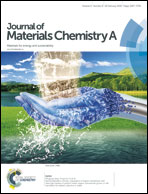Two-dimensional nanostructures for sodium-ion battery anodes
Abstract
Sodium-ion batteries (SIBs) have attracted great attention recently due to the abundance of sodium resources, particularly for large-scale electric energy storage applications for renewable energy and smart grids. More and more nanostructured anode materials have been developed with the aims of high energy density, high cycling stability, and excellent rate capability, in which two-dimensional (2D) nanostructures are showing promise due to their shortened paths for sodium ion transportation and larger surface areas for sodium ion absorption. Moreover, 2D materials (e.g. graphene) have been proved to be excellent supporting and conducting agents in SIB anodes due to their high electrical conductivity and structural stability, in which synergetic effects between the graphene and the active materials are generally observed. This review is devoted to the recent progress in the use of 2D active materials and in composites consisting of both 2D supports and active materials as anodes for SIBs. Based on the manner of sodium storage, their electrochemical performance for sodium storage is discussed in terms of four classifications, including carbonaceous materials (graphene and carbon nanosheets), alloy based materials (Sn, Sb, and P), conversion materials (phosphides/oxides/sulfides/selenides), and intercalation materials (Ti-based compounds). Finally, the main challenges for and perspectives on 2D nanostructures for sodium storage are discussed.

- This article is part of the themed collections: Recent Review Articles and International Year of the Periodic Table: Elements for Next Generation Batteries


 Please wait while we load your content...
Please wait while we load your content...